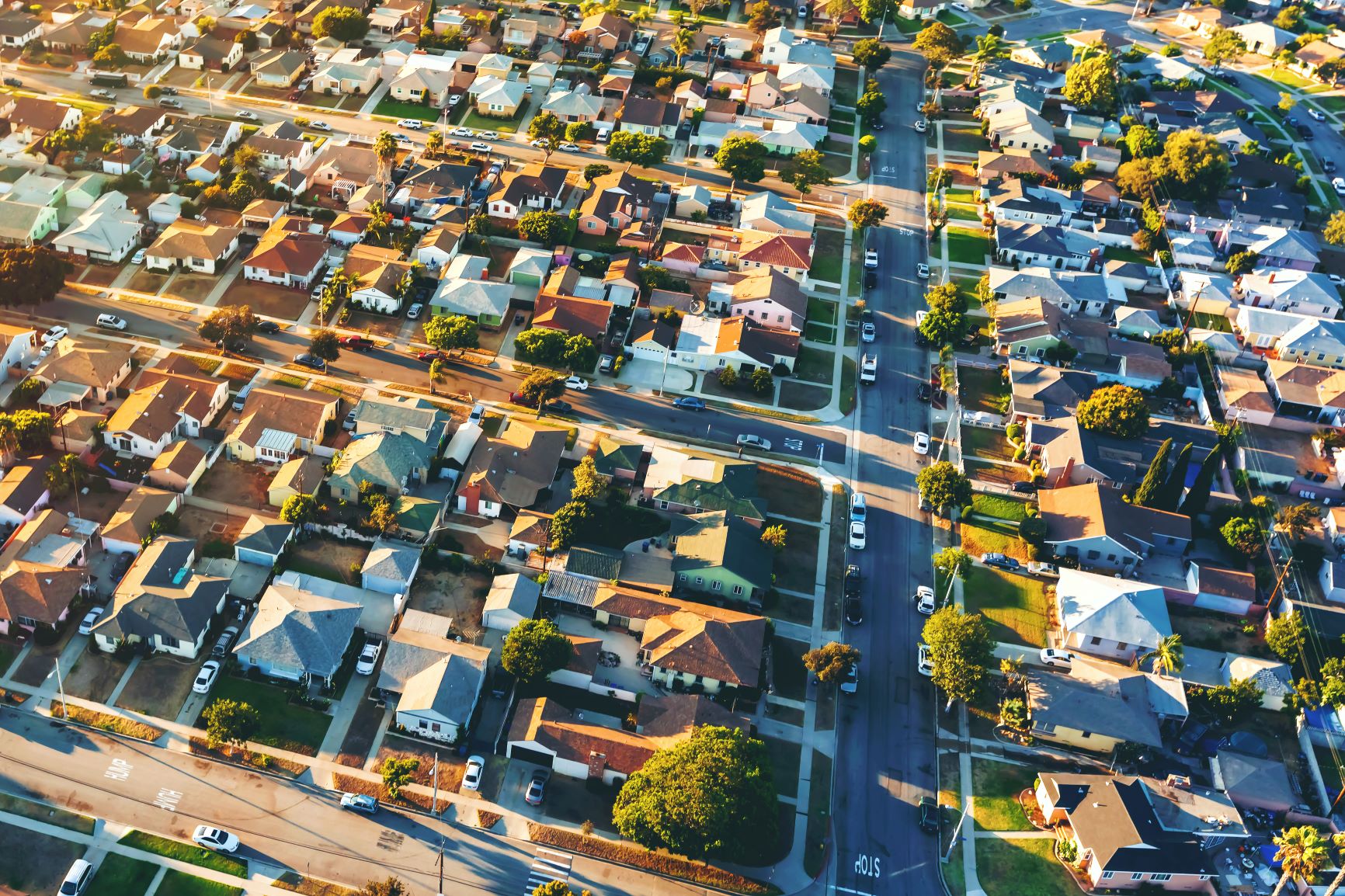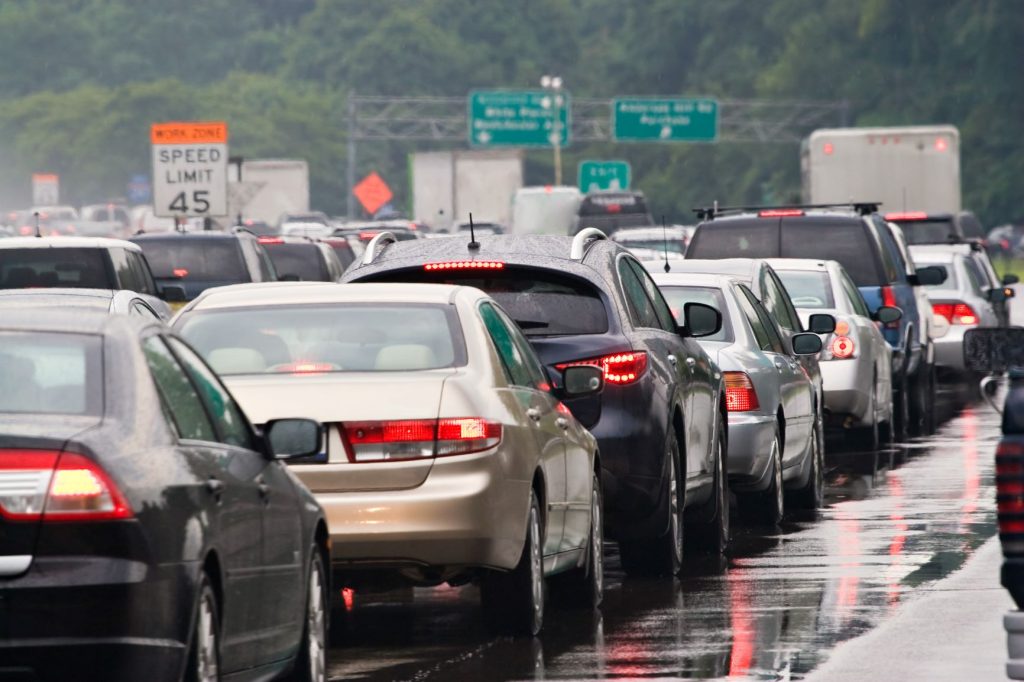
We are reader-supported. When you buy through links on our site, we may earn an affiliate commission.
Did you recently receive a promotion, get married, have kids or experience a similar life-altering change? Then big things are coming your way — one of which may include relocating. When you plan a home move, consider the cost of living by state.
Regardless of your reasons for moving, where you should relocate is a big question. Finding a new place to call home can be intimidating if you don’t have a specific area or city in mind. However, figuring out the cost of living in potential destination states helps make a state-by-state cost comparison to make the best decision for you and your finances on the most affordable states to live in.
Since prices of goods, services, houses and education vary by region, ensuring your salary adequately covers your expenses is crucial. Otherwise, your options include uprooting your family and moving somewhere more affordable. Learning more about the cost of living, how to calculate it and how it differs across the United States can help you make more informed decisions about your finances to build a better future.
- What Is the Cost of Living?
- What Does Cost of Living Include?
- Buying, Selling and Moving
- Stipends, Salaries and Subsidies
- How Has the Cost of Living Changed?
- Measuring Cost of Living Changes
- Comparing Costs
- Building a Better Future
- Cost of Living by State
What Is the Cost of Living?
The cost of living refers to the money needed to live comfortably in any given location. This sum covers basic expenses like housing, food and health care relative to average wages. For instance, if costs are higher in New York City, salary levels may also be higher, so people can afford to live there.
Often, people compare the cost of living in several cities and calculate state-by-state living expenses to determine the most affordable and the most expensive. These numbers help them decide where to live based on their income and standard of living.
What Does Cost of Living Include?
Calculating your cost of living is complex and involves many factors. Most calculations account for housing, food, transportation, utilities, health care, taxes and other relevant expenses, including child care, education and entertainment. Of course, your situation may include more or fewer factors — the average cost and the regional cost of living differences are good starting points for determining destinations worthy of consideration.

Housing
When calculating your cost of living by state, housing is the most significant determinant. Housing costs by state fluctuate immensely according to local real estate market trends. Additionally, experts could include utility costs, homeowners association fees and household maintenance in their calculations, while other realtors will only factor in rent or mortgage payments. Thus, housing costs vary considerably between cities and who you deal with.
Calculating your housing costs helps you better identify the cities and accommodations within your budget. Experts recommend you spend no more than 30% of your monthly income on housing.
However, sometimes that percentage is simply unrealistic. Do the math — if you earn Texas’s $7.25 minimum wage and work a 40-hour week in Lubbock, Texas — the state’s most affordable rental city — you would pay nearly two-thirds of your monthly gross salary to your landlord for an average-priced one-bedroom dwelling. Bearing the above in mind, determining the average rent by state can substantially assist you in deciding where to relocate.
The 2008 crash is mainly responsible for this problem. In the wake of the Great Recession, wealthy investors bought up many foreclosed single-family homes and rented them out, often charging much higher than tenants would typically pay.
As a result, America has become a renter nation, with millions of Americans finding themselves deprived of acquiring familial wealth traditionally. As rent prices continue to rise, many Americans have little remaining money to save for a down payment. You must also contend with frequent increases, whereas, as a homeowner, having a fixed-rate mortgage means enjoying the same payment throughout your loan. However, you should always consider the state property tax rates before you buy property.
Consider your personal living situation. Do you live alone or split costs with someone else? Will you rent or obtain a mortgage? Answering questions like these will help you budget, plan and decide which housing option and destination are right for you. Considering every state’s cost of living can help you choose where to set down your roots.

Food
When calculating your monthly food expenses, only include money spent at the grocery store, not restaurants and eateries. Hence, your choice of grocers and supermarkets affects your food cost of living. A grocery cost comparison can help you understand how shopping places affect living costs.
Typically, buying your food at smaller shops is more expensive because of reduced buying opportunities in bulk. Additionally, if they are the only store in the area, they hold a monopoly and can charge what they like, which can easily increase your grocery bill. In some regions, you might encounter a food desert — an area without access to fresh, affordable and nutritious produce.
Moreover, groceries themselves are becoming more expensive. The Consumer Price Index increased by 2.4% in April compared to the same time in 2024, which impacts daily living expenses. As a result of this increase, stores and supermarkets raised prices by 2.2% between May 2024 and this year, and restaurant eating saw a 3.8% escalation over the same period.
Another factor influencing rising grocery costs is climate change. Wild weather patterns impact crops, sometimes causing substantial losses. Iowa, for example, saw not one but two “500-year floods” within 15 years, with the state growing a significant percentage of the nation’s corn.
While rural living costs are less in many ways, food prices are one area where urban living reigns supreme. Groceries generally cost less in big cities because fuel and transportation outlays reduce due to the number of stores in densely populated regions. While you’ll still pay more to dine out, you can save by cooking at home.
Food costs can become a factor in determining one’s overall cost of living and decision to move to a particular location.

Transportation, Gas and Insurance
Look at the transportation costs by state to analyze how much you’ll spend on gas and insurance. Other factors, including whether you own a car, how often you use public transport and your distance from work, also affect your cost of living for transportation. It’s best to analyze your situation, including relevant expenses in your cost-of-living evaluation.
Public transportation like buses, subways and trains often offer more affordable and sustainable commuting options — all you need is a pass to hop on. Car owners must pay for fuel, insurance, maintenance, tires, licensing, registration and taxes. Depreciation means they’ll lose money over time anyway.
Regardless, if you drive a car, you’ll experience varying costs for gas and insurance depending on where you are. Several factors play roles in determining how much you’ll pay at the pump:
- Taxes: Some states place higher taxes on fuel to encourage conservation and raise needed revenue, pushing them above the average gas prices by state.
- Oil production: States that have significant oil reserves often pay less.
- Available refineries: A state with more refineries saves on transportation costs to the gas station and, eventually, your vehicle.
- Marketing costs: In dense areas, more gas companies compete for your fuel purchases. For this reason, spending more on marketing could mean higher consumer influx to their retail pumps.
While gas prices can differ substantially between states, car insurance rates by state can vary according to their minimum requirements and monthly premium calculations. Nearly all states require bodily injury and property liability coverage, but some require additional personal injury and uninsured/underinsured motorist protection. You’ll usually include these in your cost-of-living estimates and plan accordingly.

Utilities
While cost-of-living assessments may include utilities under housing expenses, sometimes they’re listed separately. For this reason, and your calculation accuracy, noting how much you’ll spend annually on utilities like electricity, gas, heat, hot water, air conditioning, cable, internet, water, garbage collection and pest control in your dream destination makes perfect sense.
U.S. electricity prices face a nominal 13% increase between 2022 and this year. Residential electricity in New England, the Middle Atlantic and the Pacific census divisions face higher increases than the national average. In contrast, current lower-priced divisions could face low price hikes. For this reason, understand how your power bill could vary when you contemplate a move.
Electricity prices include generation, transmission, delivery, taxation factors and other fees before providers arrive at a retail price. While retail electricity prices kept pace with inflation until 2023, government experts believe the increases through 2026 will begin outpacing the inflation rate, so pay heed to the inflation impact by state. With electricity second only to gasoline expenditure in the average American’s fuel-based spending in 2023, it’s essential, in light of the predictions, that you factor this utility into your cost of living.
Certain cities or states run community-based solar programs and your future dream house might run on renewable energy. These initiatives could drastically decrease your utility costs of living. In areas with regulated electricity markets or frequent water shortages, you may not have an option to choose a provider. Consequently, your utility bills may fluctuate with supply and demand, even if your usage remains unchanged.

Health Care
Unless you’re getting married or starting a family, you might assume healthcare costs across states don’t vary much. However, these expenses and benefits can vary greatly depending on where you live, and some states may even offer a subsidy or tax credit to lower your monthly payment or out-of-pocket costs.
Various factors influence a state and city’s health care costs. Depending on the region’s demographics, including its poverty rates, the number of prisoners it presides over and whether it’s a retirement-friendly state, can raise or lower a health policy’s cost. The age and health of the state’s population can also affect your health care costs. Additionally, economic success in the area will be a key contributing factor.
Your immediate location also influences health care costs. Rural vs urban cost differences mean living in a rural area may cost you more due to traveling considerable distances to access services. You may have to book off work, which could decrease your take-home pay if you are paid hourly or out of annual leave. Visiting a specialist might necessitate an overnight trip and a costly stay at a hotel. Access to health care can be a significant factor in influencing your cost of living in these areas.
Should you be contemplating a move to a rural area, check the availability of telehealth services in your desired state. The government advertises that there are no geographic restrictions for Medicare behavioral or mental health telehealth services. Still, it may be worth checking your prospective area for the availability of other telehealth treatments. Telehealth services can significantly reduce medical treatment costs by eliminating much of the travel and other expenses required for physical doctor visits.

Taxes
Each year, Americans pay taxes on property, income and sales. How much they owe depends on where they live and automatically factors into their cost of living. Not having to pay income tax might tempt you to move to Florida, Texas or one of six other states with no income tax, but remember, property taxes and other fees are likely higher there. Investigating all forms of taxation in the state is crucial, including how much you might pay in government taxes overall based on your income bracket and the other taxation forms in the state.
Every state defines income differently. For instance, New Hampshire doesn’t tax regular income but applies a flat tax rate to anything citizens earn from dividends and interest. Colorado, Michigan, North Carolina and six other states have the same taxation approach. However, some may use the adjusted gross income to determine how much you pay. All other states use a progressive tax structure that taxes higher income levels at greater rates, regardless of the cost of living.
Other Expenses
Aside from the necessary expenses above, experts often use a few other basic costs to determine the cost of living in a given location. However, estimating these can be difficult because child care, education, toiletries, entertainment, haircuts and other costs vary greatly — even within the same city or state.
Therefore, factoring these into your budget is essential to accurately predict how much life could cost in a different state. Remember to include entertainment, clothing, eating out and any other expenses you can consider.

What Causes a High Cost of Living?
Several factors influence the cost of living in some places. What affects some areas could be different in others, so researching where you want to live and the affordability factors that may influence your move is vital. Some factors potentially affecting where your household might end up are population density, taxation, health care and housing.
1. Population Density
If more people live in a given place, the price of that space will rise. In densely populated cities, the supply of housing and other limited items is often lower than demand, meaning prices inflate. New Jersey has the highest population density in the U.S., which increases the cost of living in that area. This statement isn’t a hard and fast rule — in Alaska, for example, with a low population density, the cost of living is higher than in many other states.
2. Taxation
Some states don’t have local taxes, while others use taxation to create public programs that improve the standard of living. Even between cities, municipalities tax residents differently. City and state taxation provide a solid indication of the extra living costs. If you want to avoid taxation, you could head to Oregon, Delaware, Montana, New Hampshire or Alaska, where sales tax doesn’t exist. On the other end of the spectrum, California and New York are examples of states with higher income tax levels than others.
3. Minimum Wages
Minimum wages influence the cost of living. If you have a decent job earning good money, you won’t mind living in an area with a high cost of living. In contrast, somebody in a different employment situation would seek a place where living is more affordable. Minimum wages likely adjust for higher living costs — New York City has a minimum wage of $16.50 per hour compared to others operating on the $7.50 federal minimum. The minimum wage adjustment is necessary as it costs significantly more to live in NYC than in many other cities.
4. Health Care
Higher health care costs are typically associated with “better” treatments. While many appointments may cost the same, finding a medical specialist that fits your insurance in a densely populated area saturated with health care options might be difficult. If you live somewhere rural, you will likely have limited insurance options, with marketplace coverage varying widely between locations. Then you need to cover additional traveling costs to keep your appointment.

5. Education
Education costs vary significantly within the same state. There’s no set standard for student living expenses by state concerning fees, with property taxes essentially funding education. Hence, living areas influence the cost of public schools, with schools in higher-cost-of-living areas likely more influential than others. These schools may lead students to perform better on exams and retain more information, and teachers are paid better with lower student ratios. It’s your choice where you educate your children, but prepare for higher living costs in any state if you send them to a good public school.
6. Housing
The cost of housing can drive up the cost of living or, alternatively, drive it down and give you a great deal. How easily you cover your rental or mortgage depends entirely on the percentage of your take-home pay you spend on your housing. You may move from a state where a rental property costs a specified amount to another state where housing costs and additional 10 to 20%, pushing up your cost of living.
7. Transportation
Living in a large metropolitan area reduces transportation costs as you aren’t as reliant on owned transport. For example, less than half of New York City households own a car because of the well-maintained public systems. Walking or catching a bus for errands and taking an Uber or taxi for special occasions is simple enough when you live in the city. Going without wheels would be unthinkable in many suburban or rural areas, so you have to live with the vehicle insurance and fuel costs that drive up your cost of living.
8. Household Costs
The price of groceries is increasing, along with those for eating at a restaurant or grabbing a takeaway. Escalating utility costs also affect your cost of living. Living in states like Arizona and Florida means enjoying low winter bills but paying more for air conditioning in the summer, so where you live substantially influences your living costs. Even the price of beauty services varies drastically depending on the salon you frequent. Before committing to living somewhere, research the other services you enjoy to see how they’ll fit into your budget.

Buying, Selling and Moving
From grocery bills to gas prices, the cost of living in a city affects your day-to-day life and long-term financial health. Your salary likely covers your expenses currently, but can you enjoy the same standard of living elsewhere? If unsure, consider purchasing a more affordable house for a little more wiggle room after the move. Then, you can reorganize your budget and lower your living standard if needed.
Likewise, should inflation, a sudden job loss or working for lower wages make it impossible to save money or afford your current lifestyle, perhaps move to a state with a lower cost of living. At this new location, you may be able to afford more on a smaller salary or take a more conservative approach by adjusting your spending to live better within your means. Then, you can focus on building your savings to move elsewhere.
Stipends, Salaries and Subsidies
Have you been offered a promotion that involves relocating to a new city or state? If so, you may also receive a relocation package to help cover associated moving costs. While some packages only include moving truck rental, others offer comprehensive benefits bundles to pay for everything from child care assistance to a down payment on a new house.
Your employer may give you a raise if you agree to transfer to a new location. However, you’re within your rights to negotiate better terms if you determine the offered salary won’t fully compensate your increased cost of living. Talk to your boss about education reimbursements, better health coverage, more paid time off or a recurring stipend if they don’t agree to a higher salary.
Sometimes, relocation doesn’t require you to move. Instead, you’ll work from elsewhere in the same city. In this case, your transportation costs may increase while other expenses remain unchanged. If your employer isn’t offering a stipend or salary increase to compensate you, ask for a bonus or transportation subsidy instead. These are often easier to obtain as they’re less costly for companies to dole out.
How Has the Cost of Living Changed?
Many people feel like their dollars don’t go as far as they used to, and, in many ways, they’re right. Daily goods have increased in price considerably, and while household income steadily grows, it’s not keeping up with inflation. Thus, the dollar has much less buying power than it once did. As a result, 42% of Millennials say the cost of living concerns them most financially, with 35% of Gen Z feeling the same. Living paycheck-to-paycheck is next among their concerns.
Many young people are paying more rent and waiting longer to buy homes than previous generations. They’re also paying more for four-year college degrees and racking up higher student-loan debts. As prices continue to rise, more people will likely move to areas with a lower cost of living while working multiple jobs to stay afloat.
Measuring Cost of Living Changes
The U.S. uses the Consumer Price Index (CPI) to measure fluctuations in the cost of living. The Bureau of Labor Statistics reports the CPI each month, but due to new product inventions, the CPI inevitably lags a few years behind. Thus, most economists rely on core inflation, an index that excludes volatile economic variables. This process allows them to create a more accurate representation of underlying price trends that affect the cost of living.

Comparing Costs
To simplify things, use an index to compare the overall cost of living between geographical areas. While there are several types of indices, most set a base cost of living, often represented by 100. The base can be the cost of living in a state or a single city. Then, measure other areas against the base number. For instance, if you live in Chicago, use it as the 100 base. Cities 10% more expensive to live in, you would give a 110 rating, cities that are 10% less costly, you’d rate at 90, and so on.
You can use many state cost-of-living calculators online to determine whether you can afford to live in a certain state based on your salary. Use a range of these to get the most accurate comparison and make the most informed decision.
Building a Better Future
While the cost of living may be increasing, choosing the right place to live can help you budget and save accordingly. Making informed decisions today and living within your means can build a better tomorrow for yourself and your kids.
Cost of Living by State
New Mexico
North Dakota
Oregon
Virginia
Wisconsin
Indiana
Minnesota
New Hampshire
Ohio
South Dakota
Utah
Wyoming
Idaho
Iowa
Louisiana
Massachusetts
Mississippi
New Jersey
Oklahoma
Rhode Island
Tennessee
Vermont
West Virginia
Frequently Asked Questions
Why is Knowing My Cost of Living Important?
Your cost of living is a benchmark for comparing your expenses related to different living costs. It helps you make decisions about essentials like salaries and relocations. A cost-of-living index totals your expenses, offering a detailed way to help you understand the financial needs in different locations.
What is a Good Cost of Living Index?
A good cost-of-living index is one lower than your baseline average, indicating a more affordable place to live. If your baseline is 100, any numbers above 100 mean higher costs, and those below 100 indicate lower costs than the baseline. The lower the number, the better the cost-of-living index.
What is the Full Meaning of Cost of Living?
Your cost of living is the money you need to afford the basic expenses of life in a particular city or state. These expenses likely include costs relating to housing, clothing, food, transport, taxes, education, health care, utilities, entertainment and more.
Original Publish Date 4/29/2024 — Updated 7/01/2025







